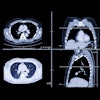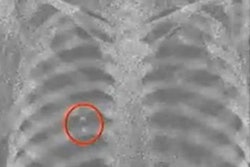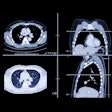Wednesday, December 4 | 10:40 a.m.-10:50 a.m. | SSK19-02 | Room E353B
Dark-field x-ray imaging is a new technology designed to visualize the alveolar structure of lung tissue. The dark-field signal is generated by coherent small-angle x-ray scattering, which does not create contrast in the conventional transmission x-ray image, according to researchers.Technically, dark-field images are acquired by using a conventional x-ray source and a conventional detector in combination with a grating interferometer. In addition to the new dark-field image, this approach also automatically acquires a conventional x-ray transmission image, such that image features in the two complementary images can be easily correlated.
But one challenge to dark-field x-ray is Compton scatter overlaying the dark-field signal, which impedes image formation and hampers diagnostic interpretation.
In this presentation, Thomas Koehler, PhD, a senior scientist for research at Philips Healthcare, will describe the development and validation of a process to eliminate Compton scatter to the dark-field signal.
The researchers used a slot-scanning dark-field chest x-ray system to acquire raw data from phantoms and 10 human patients, with the correction for Compton scattering performed in a two-step approach. First, they generated a conventional x-ray transmission and a dark-field image by standard phase retrieval. Second, they calculated estimates for scattered intensity for each slot position that were accounted for as additional incoherent background radiation during a second-pass phase retrieval.
Dark-field images without scatter correction showed an artificial dark-field signal in areas of the backbone, heart, and abdomen. By using the scatter correction, the researchers greatly reduced the artificial dark-field signal and enhanced the quantitative measurement of the true dark-field signal generated by lung tissue.
The correction of the dark-field signal was 20% to 40% in the backbone, 10% in the heart, and 10% to 20% in the abdomen, Koehler and colleagues estimated.



















